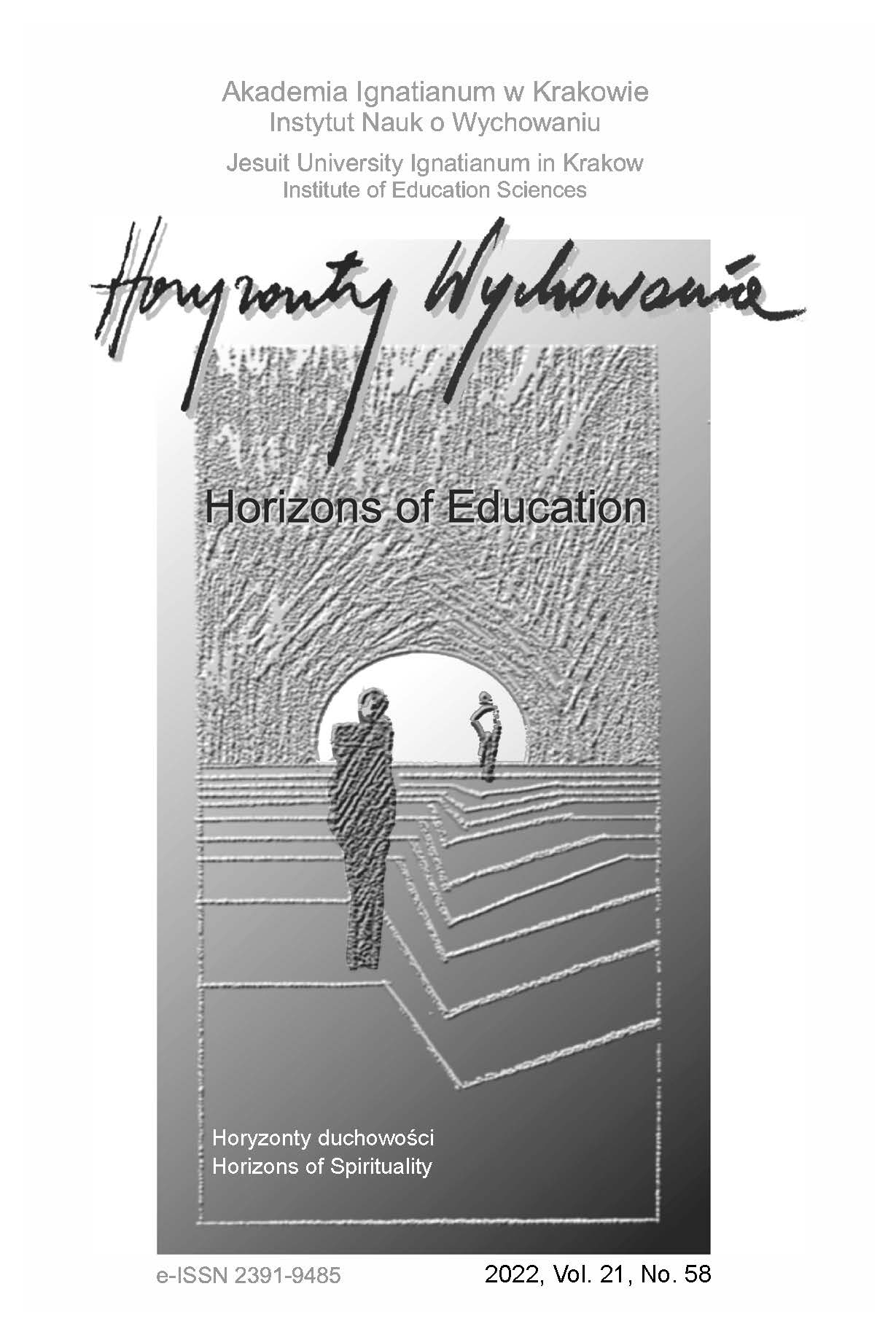Living in Exile of Polish Children. A Review Article
Abstract
RESEARCH OBJECTIVE: The aim of the review article is to refer to the facts concerning the saving of Polish children in the period of the Bolshevik revolution after the First World War in Syberia and Manchuria, as shown in W. Theiss’s book, and comparing them with the situation of Polish children living in exile on a few continents during the Second World War in the context of preserv‑ ing their Polish identity.
THE RESEARCH PROBLEM AND METHODS: The article is to present some similarities of the situation of Polish children living out of the homeland in the period of the Bolshevik Revolution in Syberia and Manchuria, and their wandering plight in Mexico, Africa and New Zealand, as well as. The analysis concerned mainly facts gained from archival sources, appropriate for the methodology of research within the scope of the history of education.
THE PROCESS OF ARGUMENTATION: The argumentation consists of two basic parts. In the first one – through the prism of the reviewed book, the author shows the children evacuation from the Soviet Far East to the homeland. In the second one, the author shows the situation of children in exile during the Second World War and their return to the homeland, which was a complex prob‑ lem due to political reasons.
RESEARCH RESULTS: A complete analysis showed the likeness of the plight of the Polish chil‑ dren living in exile and the concern to save them from being uprooted and the differences referring to their return to Poland.
CONCLUSIONS, INNOVATIONS AND RECOMMENDATIONS: The idea of return to homeland is timeless and still relevant. Its realization is in the emotional and deeply patriotic dimension, enriching the Polish nation and state, regardless of the historical period.
References
Bohusz-Szyszko, Z. (1993). Czerwony sfinks (wyd. 2). Polska Fundacja Kulturalna.
Chmielewski, W. (2008). Szkolnictwo polskie w Afryce Środkowo-Wschodniej i Południowej podczas II wojny światowej. Przegląd Historyczno-Oświatowy, 3-4, 61-74.
Chmielewski, W. (2015). Polskie osiedle Santa Rosa w Meksyku 1943-1946. Oficyna Wydawnicza ASPRA-JR.
Chmielewski, W. (2022). Dzieje polskie w Nowej Zelandii. Obóz w Pahiatua (1944-1949). Wydawnictwo Naukowe Akademii Ignatianum w Krakowie.
Fokierski, W. (1948). Pismo kierownika Ministerstwa WRiOP prof. W. Fokierskiego z 24 listopada 1948 r. do ks. płk dra Leona Broel-Platera w Pahiatua. Instytut Polski i Muzeum gen. Sikorskiego w Londynie, zespół: Ministerstwo Wyznań Religijnych i Oświecenia Publicznego, sygn. A. 19. VI/7.
Głowacki, A. (1994). Ocalić i repatriować. Wydawnictwo Uniwersytetu Łódzkiego.
Królikowski, Ł.Z. (2008a). Pamiętnik sybiraka i tułacza. Wydawnictwo OO. Franciszkanów „Bratni Zew”.
Królikowski, Ł.Z. (2008b). Skradzione dzieciństwo. Polskie dzieci na tułaczym szlaku 1939-1950. Wydawnictwo OO. Franciszkanów „Bratni Zew”.
Manterys, S. (red.). (2006). Dwie ojczyzny. Polskie dzieci w Nowej Zelandii. Tułacze wspomnienia, (S. Manterys, S. Zawada i A. Szatkowska, tłum.). Oficyna Wydawnicza RYTM.
Niedziałkowski, M. (1990). List Michała Niedziałkowskiego z 10 września 1990 r. do urszulanki SJK w Pniewach. Archiwum Główne Urszulanek SJK w Pniewach.
Sprawozdanie ze stanu szkolnictwa za czas od 1 stycznia do 30 kwietnia 1945 r. (1945). Instytut Polski i Muzeum gen. Sikorskiego w Londynie, zespół: Maszynopisy i rękopisy, sygn. B. 1853.
Stopikowska, M. (2000). Rodzina polska na zesłaniu w ZSRR. Studium pedagogiczne. Stowarzyszenie Współpracy Polska-Wschód.
Theiss, W. (1991). Dzieci syberyjskie. Dzieje polskich dzieci repatriowanych z Syberii i Mandżurii. Uniwersytet Warszawski Wydział Pedagogiczny.
Theiss, W. (2020). Dzieci syberyjskie 1919-2019. Z Syberii przez Japonię i Stany Zjednoczone do Polski (wyd. 2). Muzeum Sztuki i Techniki Japońskiej Manggha.
Zaleski, E. (1950). Statistics Polish children 12th May, 1950. Instytut Polski i Muzeum gen. Sikorskiego w Londynie, zespół: Ministerstwo Spraw Zagranicznych, sygn. A. 11. E/1202.
Copyright (c) 2021 HORIZONS OF EDUCATION

This work is licensed under a Creative Commons Attribution-NoDerivatives 4.0 International License.
Authors who publish in this journal agree to the following terms:
- Authors retain the copyright to their work while granting the journal the right of first publication. The work will be simultaneously licensed under a CC BY-ND license, which permits others to share the work with proper credit given to the author and the original publication in this journal.
- Authors may enter into additional, non-exclusive agreements for the distribution of the published version of the work (e.g., posting it in an institutional repository or publishing it in another journal), provided that the original publication in this journal is acknowledged.
We allow and encourage authors to share their work online (e.g., in institutional repositories or on personal websites) both before and during the submission process, as this can foster beneficial exchanges and lead to earlier and increased citations of the published work. (See The Effect of Open Access). We recommend using any of the following academic networking platforms:





